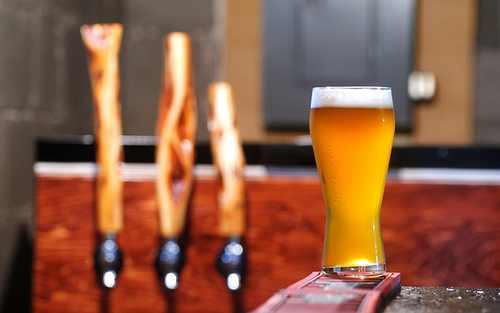BilltownBandit
Well-Known Member
Last friday (Sept. 30th) I brewed a pale ale. Here's the recipe for the 6 gallon batch
FERMENTABLES
3.15lbs of golden malt
6lbs of pilsen malt
.5 lb of honey malt
HOPS
.5oz Chinook (60 min)
1oz Citra (15 min)
1oz citra and 1oz cascade at flameout
YEAST
Wyeast American Ale 1272
It's been a few days since and the gravity is sitting at 1.02 and it's at 70 degrees. When taking a reading i tasted a bit, naturally. It was amazingly similar to grapefruit juice, especially because it isn't fully fermented and still sweet. haha, i am not kidding if someone would have told me that it as a glass of grapefruit juice i would have totally believed it. Im pretty excited about how it is going to turn out!
However, I am not sure when to go for the secondary, because I don't often do one. I would really like to see this turn out crystal clear so I am going to do one. Anyone have advice?
OG- 1.056
It's been 3 and a half days since pitching and the gravity is down
FERMENTABLES
3.15lbs of golden malt
6lbs of pilsen malt
.5 lb of honey malt
HOPS
.5oz Chinook (60 min)
1oz Citra (15 min)
1oz citra and 1oz cascade at flameout
YEAST
Wyeast American Ale 1272
It's been a few days since and the gravity is sitting at 1.02 and it's at 70 degrees. When taking a reading i tasted a bit, naturally. It was amazingly similar to grapefruit juice, especially because it isn't fully fermented and still sweet. haha, i am not kidding if someone would have told me that it as a glass of grapefruit juice i would have totally believed it. Im pretty excited about how it is going to turn out!
However, I am not sure when to go for the secondary, because I don't often do one. I would really like to see this turn out crystal clear so I am going to do one. Anyone have advice?
OG- 1.056
It's been 3 and a half days since pitching and the gravity is down






























![Craft A Brew - Safale S-04 Dry Yeast - Fermentis - English Ale Dry Yeast - For English and American Ales and Hard Apple Ciders - Ingredients for Home Brewing - Beer Making Supplies - [1 Pack]](https://m.media-amazon.com/images/I/41fVGNh6JfL._SL500_.jpg)


























